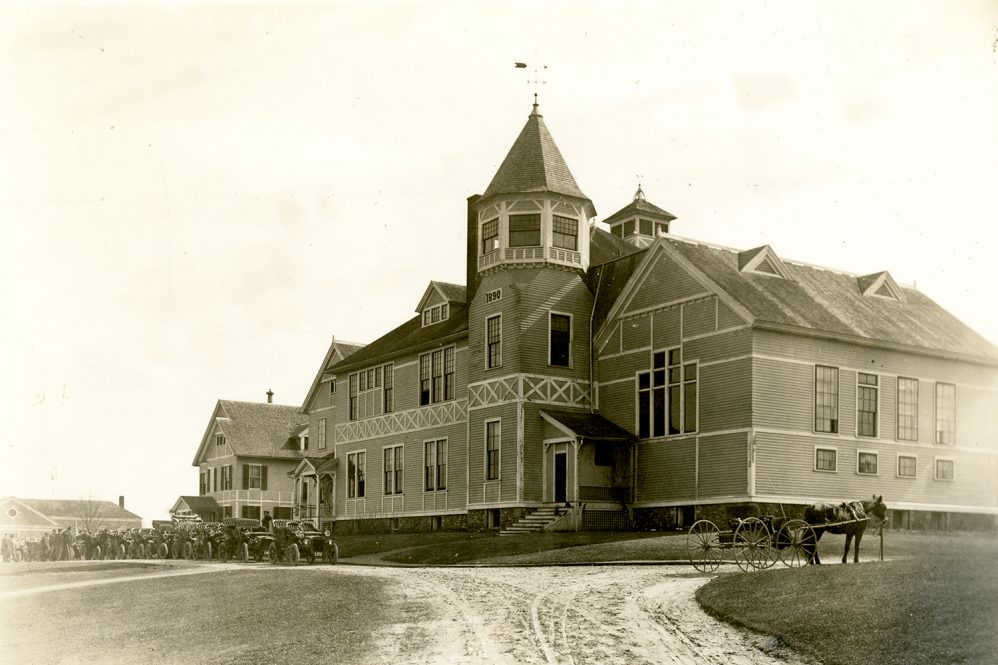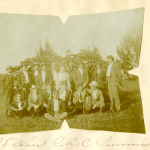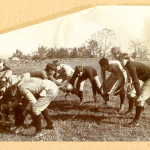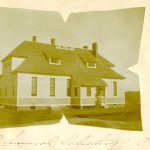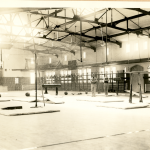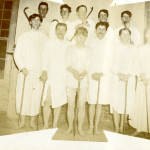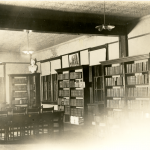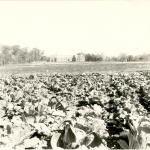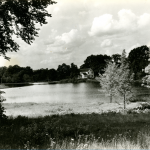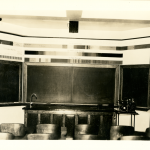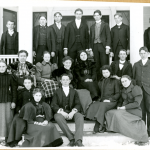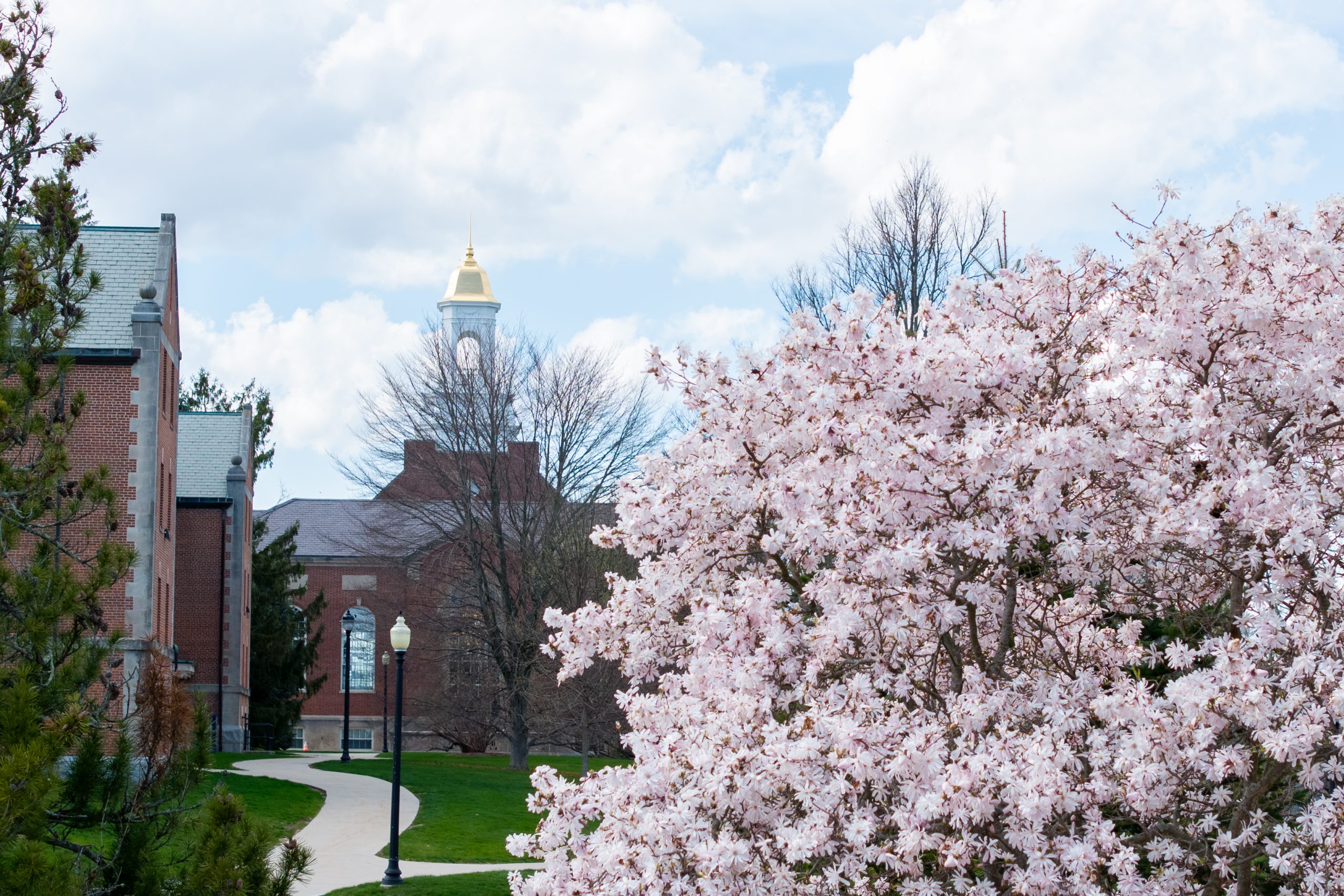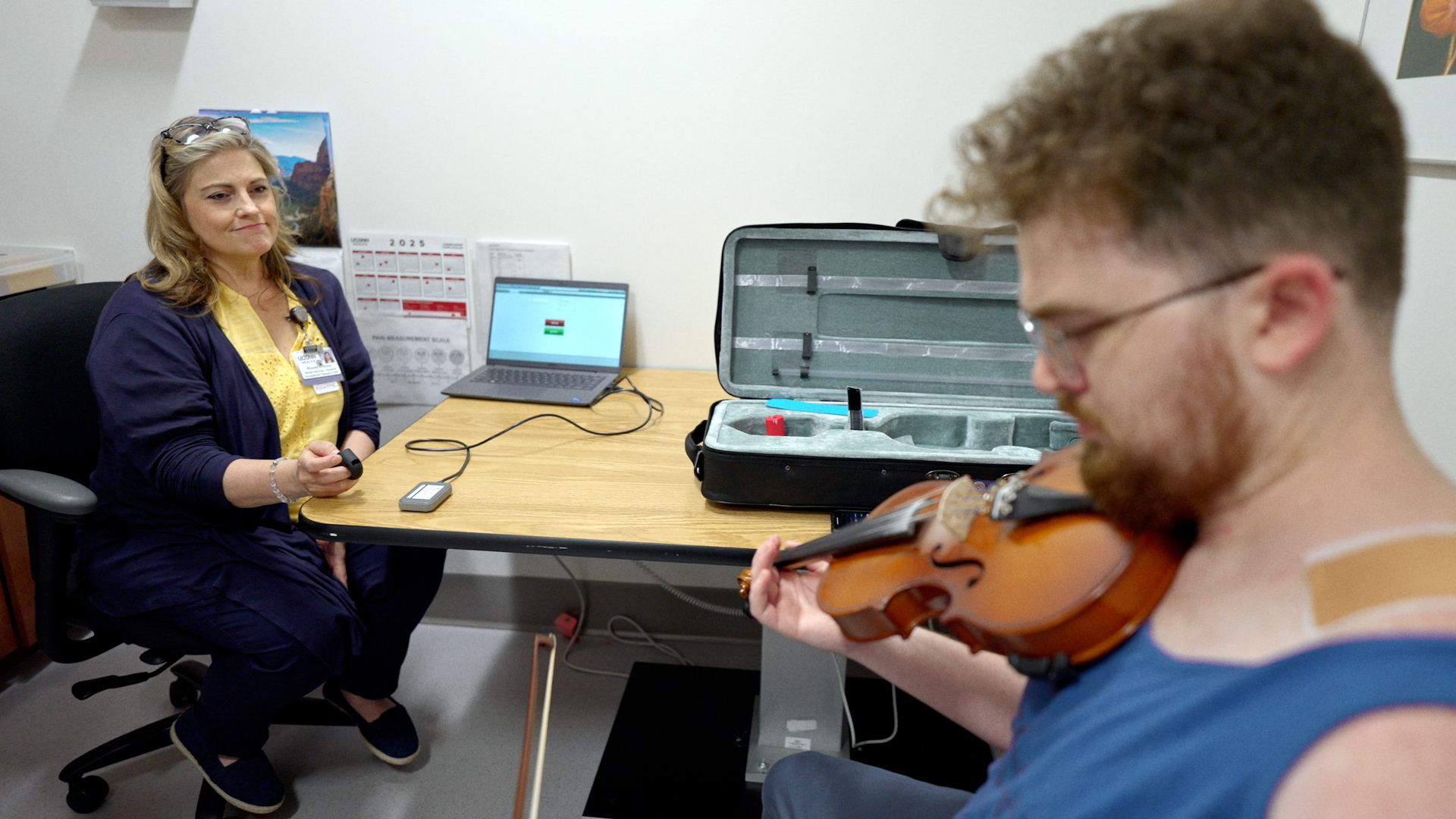Never one for hyperbole, The New York Times was complimentary but circumspect in describing the predecessor of modern-day UConn, which today marks 140 years since its first classes were held on Sept. 28, 1881.

“The new Storrs Agricultural School, authorized by the last Legislature, is fully organized with three instructors and 13 scholars,” the so-called Old Gray Lady noted in a short news item a few months later.
“It is experimental, but much good is expected from it.”
Much good, indeed!
With 140 years of uninterrupted academics under its belt, UConn now has 14 schools and colleges, more than 30,000 students, and degrees in more than 115 majors.
That’s a far cry from its first days, when it had more chickens than people: Around a dozen students were enrolled in its first year, all studying a curriculum focused on agricultural pursuits.
Although some other private institutions were offering liberal arts educations in the late 1800s, state leaders and farmers saw a strong need for an institution that would teach hands-on, practical farming methods.
With the state’s approvals and gifts of land and money from brothers Augustus and Charles Storrs, work was under way to set up the Storrs Agricultural School right up to the day it opened in fall 1881.
“Farmers throughout the State will be interested in knowing that the work of fitting up the building designed for a State agricultural school in Mansfield is now going on rapidly,” the New Haven Morning Journal-Courier reported on Sept. 20, 1881.
“Furniture for school rooms and dormitories is being introduced and put into place and a chemical laboratory is also being furnished,” the paper continued, adding that “wide-awake farmers’ boys ought to jump at the chance” to enroll, especially since the school’s trustees had decided to provide English classes in addition to the agriculture offerings and other classes.
“Many a farmer’s boy who has been kept so busy during the year that he is not already backward in his studies would not be allowed to go to Mansfield if his general education was to be neglected while pursuing special studies. But as facilities are afforded, our rural readers will be quick to recognize the opportunity to kill two birds with one stone.”
The first students – all male – were housed in the old Whitney Hall near the corner of Route 195 and North Eagleville Road, a former orphanage that became the school’s first building. Although it was razed in 1932, a granite slab that was the building’s front step can still be found at the site.
They had 11 students on the first day of classes; by the end of the calendar year, two more had joined the ranks, according to news clippings of the time.
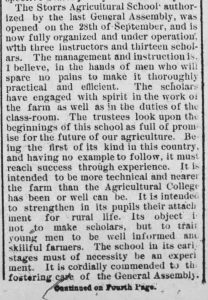
“The scholars have engaged with spirit in the work of the farm as well as in the duties of the classrooms,” the Meriden Daily Republican told its readers on Jan. 4, 1882, a few months after the school’s launch.
And as remains the case today, students at the Storrs Agricultural School came from economically diverse families.
In fact, nearly one-fifth of its students coming from the lowest economic category of laborers and farmers without property and received the school’s financial assistance to cover their attendance, according to research by Dr. Nathan M. Sorber, now at West Virginia University, as part of his 2011 doctoral dissertation at Penn State.
In the months leading up to the start of classes at the school, many wondered if the experiment would succeed in drawing students. But as the Hartford Courant noted earlier in the year, a modest start can lead to great outcomes: “Unconscious squirrels and bog mice helped plant the biggest oaks that grow,” its editors noted.
“What is the Storrs Farm School to be? Lots of people are curious to know,” they asked. “In general terms it will be what the genius of the people of Connecticut pleases to make it.”
And what did Connecticut please to make it? A nationally renowned institution that’s now among the ranks of the nation’s Top 25 public universities.
Storrs Agricultural School changed its name in 1893 to Storrs Agricultural College (SAC), which became the Connecticut Agricultural College (CAC) in 1899 and Connecticut State College (CSC) in 1933.
In 1939, it was designated the University of Connecticut and has grown tremendously in enrollment, economic reach, and stature.
Starting with one building and a lot of farm land, UConn now has 4,200-acres-plus on multiple campuses across the state; more than 270,000 living alumni worldwide, including about 150,000 in Connecticut; and, yes, still a lot of farm land.
And it all started 140 years ago with a handful of students and instructors – not unlike those squirrels and bog mice – planting the seeds of today’s UConn.
